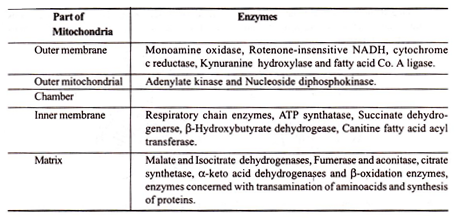ADVERTISEMENTS:
In this article we will discuss about the effect of salt stress on plants.
Agricultural productivity is severely affected by high soil salinity and is responsible for decline in soil fertility throughout the world. It is estimated that more than 30 percent of irrigated soil in India has been affected by high soil salinity. Nearly 20 million hectares are being affected every year on global scale.
When plants are under salt stress, flow of water into the plant is reversed and it causes ion imbalance. Plant dies as water is drawn out of the cell and accumulation of excess sodium (Na+) and chloride (Cl–) ions in the cytoplasm takes place. Many have toxic effects on the functioning of cells by affecting protein synthesis, enzyme functions and poor rate of photosynthesis.
ADVERTISEMENTS:
Halophyte group of plants can survive high saline conditions and continue to thrive by maintaining their internal osmotic status. Some halophytes excrete salt with the help of specialized glands on their leaf surfaces.
Sensing Salt Stress:
Plant cells are capable of sensing high salinity (hyperosmolarity) and ion specific signals of salt stress. Under these circumstances, plant maintains a high concentration of K+ and a low concentration of Na+ in the cytosol. Little is known about how Na+ is sensed in any cellular system.
It is presumed that Na+ can be sensed either before or after entering the cell. Presence of membrane receptors and membrane proteins are probably responsible for sensing extra cellular and intracellular Na+, respectively.
ADVERTISEMENTS:
Sometimes, certain Na+ sensitive enzymes in the cytoplasm can detect intracellular Na+. Entry of Na+ into cells is due to immense negative potential across the plasma membrane and Na+ enters plant cells with the aid of high affinity K+ transporter and also through other cation channels. In rice, for example, Na+ entry into plant cells is due to apoplastic mechanism and later enters transcription stream.
To counter balance or to prevent sodium accumulation into cytoplasm, three possible tolerance mechanisms have been implicated, such as:
(i) Reducing Na+ entry into cells,
(ii) Active Na+ efflux from the cell and
(iii) Active transport of Na+ into the vacuole.
Accumulation of sodium in different parts of the plant body is a highly selective process in most of the plants. Accumulation is highly preferred in older leaves than accommodating in younger sensitive meristem tissues. Transportation of sodium into the vacuole requires input of energy and is executed against concentration gradient. This process is accomplished by coupling transport protein to a proton pump. The electrochemical gradients of protons are generated by the vacuolar H+-translocating enzyme like H+ ATPase. Consequently, H+ ion moves in opposite direction through tonoplast membrane.
In Arabidopsis, Na+ efflux is carried out by the plasma membrane Na+/H+ antiporter is encoded by the SOS1 (salt overly sensor) gene. Salt stressed plants have been found to exhibit SOS1 activity in almost all tissues. However, its greatest activity is detected in epidermal cells at the root tip.
SOS1 facilitates long distance transport of Na+ and it is significant in the removal of sodium through transpiration and the vacuolar sequestration of Na+ in leaves. Plasma membrane H+-ATPase generates the driving force for Na+ transport. Transgenic experiments conducted in Arabidopsis thaliana showed that plasma membrane antiporter SOS1 when over expressed conferred resistance to salt stress.
Since promoter activity of SOS1 gene is not upregulated by salt stress, its expression is placed under the control of virus 35S promoter and conferred resistance upto 200 mM NaCl in the medium. Interestingly, identification of SOS2 and SOS3 confirmed that upregulation of SOS1 is partly under the control of SOS2 and SOS3. In the extended transgenic work, overexpression of the Arabidopsis H+ pyrophosphase (AVP1) was shown to improve salt stress.
ADVERTISEMENTS:
In the proposed model of signal transduction under salt stress condition, high level of Na+ increases calcium in cytoplasm that might act as a key component of Na+ stress signalling. SOS3 is a calcium-binding protein capable of sensing cytosolic calcium and activate SOS2 (protein kinase).
This protein kinase in turn phosphorylates and activates plasma membrane Na+/H+ antiporter SOS1. The carboxyl-terminal regulatory domain of SOS2 interact with SOS3, mediated by 21 amino-acid sequences, FISL, motif. Finally SOS1 mRNA is stabilized and accumulates under salt stress (Fig. 15.6).
Na+ Sequestration:
ADVERTISEMENTS:
Sequestration of Na+ into the vacuole not only lowers Na+ concentration in the cytoplasm but also maintains osmotic balance. In Arabidopsis, effective transportation of Na+ into the vacuole is carried out by AtNHX1 and AtNHX2 proteins localized in the tonoplast membrane. In several transgenic plants, overexpression of AtNHX1 gene was reported to enhance plant salt tolerance considerably.
Root specific expression of K+ transporter gene AtKG1 was found to be upregulated when plants are stressed by salinity. Upregulation of several genes in response to salt stress are KMT1 and various HAK/KUP types of genes. Several of this Na+-K+ co-transporter display osmosensing capabilities when expressed in xenopus oocytes.
Salt Stress Induced Proteins:
In addition to the accumulation of osmo-protectant compounds, a large set of plant genes are expressed and accumulate new set of proteins under salt-stressed-condition. Transcription of genes encoding late embryogenesis-abundant (LEA) proteins is activated under abiotic stress particularly, under salt and water deficit conditions.
ADVERTISEMENTS:
LEA proteins have been first characterized in cotton. It has been hypothesized that these proteins have protective function and may be indispensable for the survival of plant under extreme seline stress. This was confirmed by introducing late embryogenesis abundant (LEA), HVA1 genes, encoding a group of 3 LEA proteins from barley into the rice plant.
In transgenic rice, expression of barley HVA1 gene driven by rice actin promoter led to high level accumulation of HVA1 protein. Second generation of transgenic rice plants has shown significant increase in their tolerance to high saline and water deficit condition. Thus, LEA genes can be exploited as molecular tool for genetic improvement of crop towards stress tolerance.



